The House of Stuart Portrait Collection
Most of the portraits in the Ballroom originally belonged to Henry Stuart, Cardinal Duke of York and brother of Bonnie Prince Charlie, who died in Rome in 1807. In 1842 they were purchased by Sarah, Baroness Braye, who was wintering in Rome with her daughter Catherine. An exceptional portrait is that of the Cardinal’s older brother, Prince Charles Edward, the Young Pretender, by Laurent Pecheux (1729-1821.) This was the last major portrait of the Prince, painted in 1770, when he was fifty. It shows him wearing the arms and armour given to him by a distinguished group of Scottish nobles, led by the Duke of Perth, to wear at court in exile. In the background is depicted his victory at Prestonpans. On either side of the main door are portraits of their parents, King James III, the Old Pretender, and his wife, Maria Clementina, granddaughter of the King of Poland. Next to the fireplace is a portrait of George Villiers, 1st Duke of Buckingham, as Lord High Admiral.
To the right of the fireplace is King Charles II by Sir Peter Lely (1618-1680,) painted in about 1665. In one of the display tables are some Stuart memorabilia, including the Cardinal’s spectacle case and a miniature of Mary Queen of Scots, which originally belonged to her mother-in-law Marie de Medici, Queen Dowager of France and a rosary belonging to Bonnie Prince Charlie.
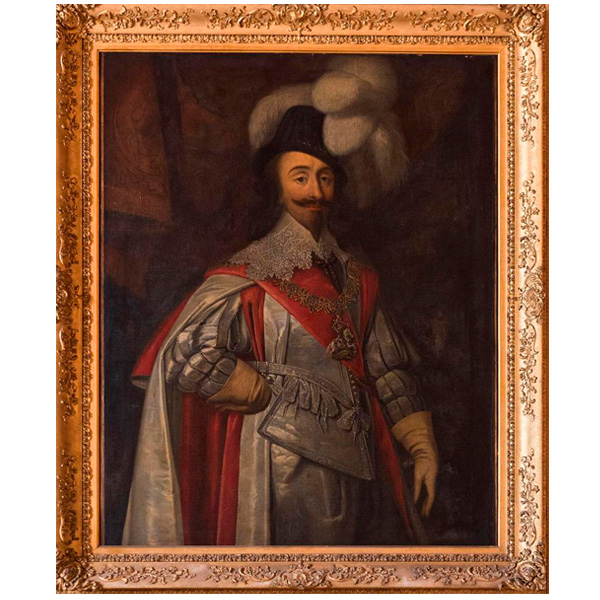
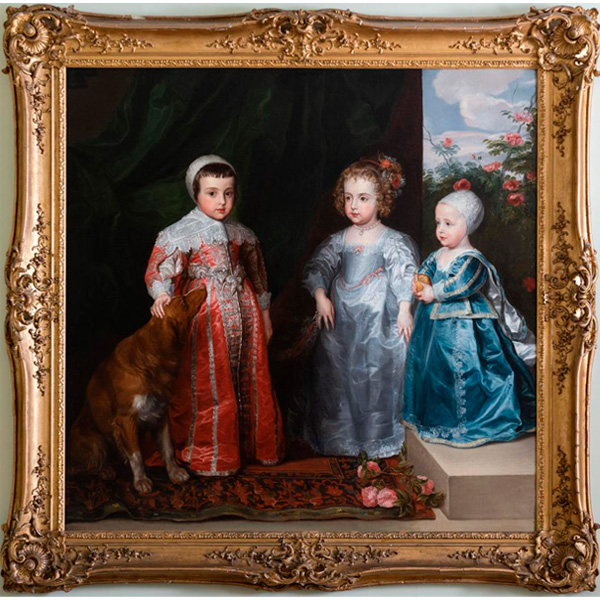
In the Yellow Drawing Room, there is another large painting from the collection, which is after Van Dyck and shows three of the children of King Charles I, The Prince of Wales, later King Charles II in red, Prince James, later King James II, in blue and their sister Princess Mary between them. The large dog often appears in pictures of the Royal Family at this time. Finally, there are three more pictures from the Stuart Collection in the Green Dining Room, King Charles I and Queen Henrietta Maria from the English school of Anthony Van Dyck. Over the fireplace is a charming earlier portrait of Henrietta Maria, painted at the time of her engagement.
The Percy Pilcher Aviation Collection
The Pilcher Aviation display is situated in the Stable Courtyard. It’s principal exhibit is a working replica of ‘The Hawk’, the Flying Machine in which Lieutenant Percy Pilcher, RN, who is recognised as England’s Pioneer Aviator, was killed at Stanford in 1899.
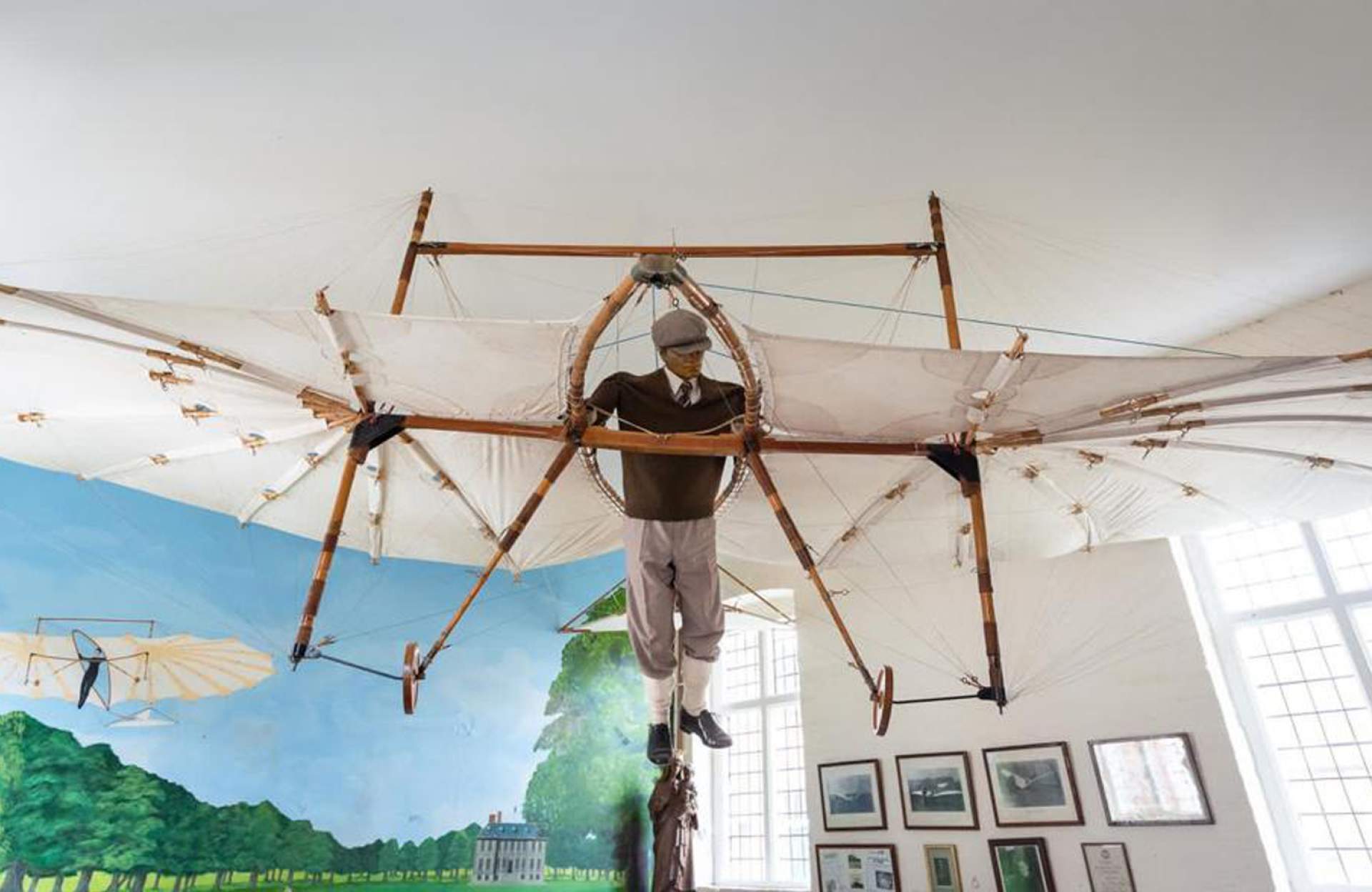
The Hilditch Porcelain Tea-Ware Collection
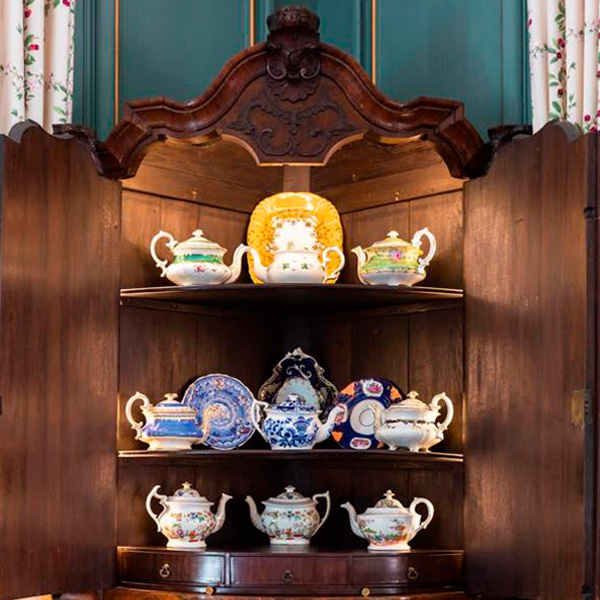
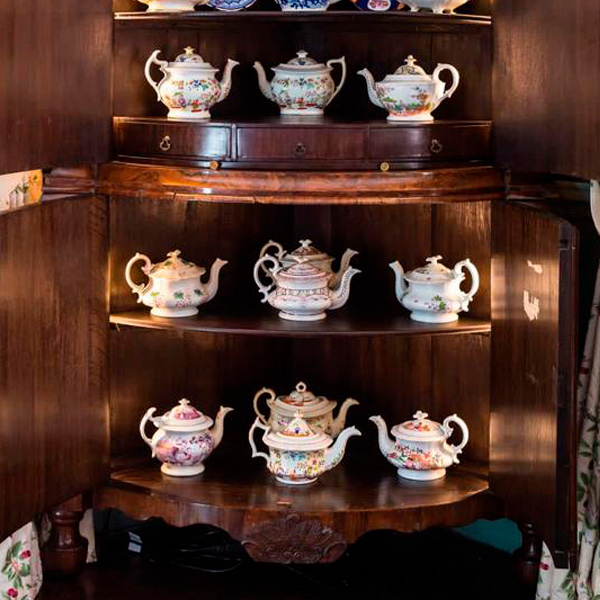
This collection of porcelain tea ware is displayed in the Green Drawing Room and in the Crocodile Room in the Stables Courtyard. It was kindly donated to the Hall in 2013 by Margaret Hewat who also wrote a comprehensive collectors guide in 2003. Hilditch & Son were manufacturers of earthenware and porcelain at Lane End in North Staffordshire from 1822-1830. The collection consists of a large number of tea sets. Many of their designs are typical of H&S and are printed in underglaze blue or in sepia with glaze on enamelled colours known as ‘clobbering’. These fine quality porcelain tea sets were a speciality in Victorian times and reflect the chinoiserie taste of the period. They are all marked in the famous ‘H&S’ markings.



